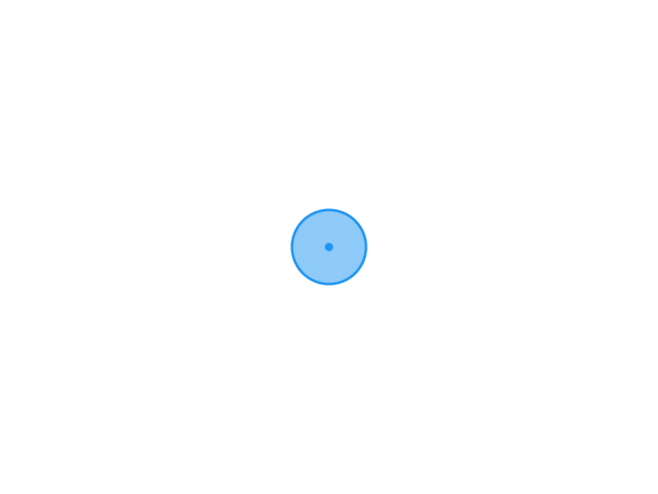/*
实现商品库存清单案例
步骤:
1. 实现表头, 是固定数据,直接写输出语句 sop
2. 表格中间, 商品数据,采用变量形式 定义变量,找对数据类型
输出所有变量
3. 表格尾巴, 一部分数据固定
另一部分吗,商品数据进行数学计算,运算符
*/
public class Demo1{
public static void main(String[] args){
//输出表头固定数据
System.out.println("----------商场库存清单----------");
System.out.println("品牌型号 尺寸 价格 库存数");
//定义表格中的数据变量
//品牌型号,String, 尺寸,价格 double 库存int
String macBrand = "MacBookAir";
double macSize = 13.3;
double macPrice = 6988.88;
int macCount = 5;
String thinkBrand = "ThinkPadT450";
double thinkSize = 14;
double thinkPrice = 5999.99;
int thinkCount = 10;
String asusBrand = "ASUS-FL5800";
double asusSize = 15.6;
double asusPrice = 4999.5;
int asusCount = 18;
//商品信息变量进行打印,变量之间加入一定的字符串空格
System.out.println(macBrand+" "+macSize+" "+macPrice+" "+macCount);
System.out.println(thinkBrand+" "+thinkSize+" "+thinkPrice+" "+thinkCount);
System.out.println(asusBrand+" "+asusSize+" "+asusPrice+" "+asusCount);
//计算库存总数,所有商品数量库存求和
int totalCount = macCount+thinkCount+asusCount;
//计算所有商品库存的总金额,每个商品价格*库存数
double totalMoney = macCount*macPrice + thinkCount*thinkPrice + asusCount*asusPrice;
//输出表格底部
System.out.println("总库存数: "+totalCount);
System.out.println("商品库存总金额: "+totalMoney);
}
}
/*
定义Java中的变量
定义出所有数据类型的变量
四类八种
*/
public class Variable {
public static void main(String[] args){
//定义整数类型,字节类型 byte类型
//内存中1个字节, -128 127
byte b = 100;
System.out.println(b);
//定义整数类型,短整型, short类型
//内存中2个字节, -32768 32767
short s = 200;
System.out.println(s);
//定义整数类型, 整型, int类型
//内存中4个字节, -2147483648 2147483647
int i = 500006;
System.out.println(i);
//定义整数类型, 长整型, long类型
//内存中8个字节
long l = 21474836407L;
System.out.println(l);
//定义浮点数据, 单精度 float类型
//内存中4个字节
float f = 1.0F;
System.out.println(f);
//定义浮点数据, 双精度 double类型
//内存中8个字节
double d = 2.2;
System.out.println(d);
//定义字符类型, char
//内存中2个字节, 必须单引号包裹,只能写1个字符
char c = '我';
System.out.println(c);
//定义布尔类型, boolean
//内存中1个字节, 数据值, true false
boolean bool = true;
System.out.println(bool);
}
}
/*
常量: 字符串,双引号,包裹, "0-n"
*/
public class Variable_1{
public static void main(String[] args){
//定义变量,字符串类型,数据类型 String 表示字符串的数据类型
String s = "我爱java";
//String 属于引用类型,定义方式,和基本类型一样
System.out.println(s);
int i =10;
}
}
/*
变量定义和使用的注意事项
1. 变量定义后,不赋值,不能使用
2. 变量是有自己的作用范围,变量的有效范围,定义的一对大括号内
3. 变量不允许重复定义
*/
public class Variable_2{
public static void main(String[] args){
int i = 5;
System.out.println(i);
{
int j = 10;
System.out.println(j);
}
int i =1;
}
}
/*
三元运算符
公式:
布尔表达式 ? 结果1:结果2;
布尔表达式结果是true,三元运算符的结果,就是 结果1
布尔表达式结果是false,三元运算符的结果,就是 结果2
*/
public class Operator_5{
public static void main(String[] args){
System.out.println(3>5?99:88);
String s = 0==1?"哈哈":"呵呵";
System.out.println(s);
int a = 5;
int b = 3;
int c = 1;
// T && T
int n2 = (a>b && b>c) ? (c++) : (++c);
System.out.println(c);
System.out.println(n2);
}
}
/*
逻辑运算符,对两个boolean类型数据之间进行计算
结果也是boolean类型
& : 一边是false,运算结果就是false, 见了false,就是false
| : 一边是true,运算结果就是true,见了true,就是true
^ : 两边相同为false,不同为true
! : 取反 !true = false !false=true
&& : 短路与 , 一边是false,另一边不运行
|| : 短路或 , 一边是true,另一边不运行
*/
public class Operator_4{
public static void main(String[] args){
System.out.println( false & true );
System.out.println( true | true );
System.out.println( false ^ false );//F
System.out.println( true ^ false );//T
System.out.println( true ^ true );//F
System.out.println( !true );
System.out.println( "--------------------------" );
int i = 3;
int j = 4;
System.out.println(3>4 && ++j>2);
System.out.println(i);
System.out.println(j);
System.out.println(3==3 || ++j>2);
System.out.println(i);
System.out.println(j);
}
}
/*
比较运算符,计算结果只有2个可能,true,false
结算结果的数据类型, boolean类型
== 比较符号两边的数据
!= 比较符号两边的数据
> 比较符号两边的数据 1<2 true 2<2 false
< 比较符号两边的数据
>= 比较符号两边的数据 1>=2 false 2>=2 true
<= 比较符号两边的数据
*/
public class Operator_3{
public static void main(String[] args){
int i = 3;
int j = 4;
System.out.println(i=j);
System.out.println(i==j);
System.out.println(2==1);
System.out.println(2!=1);
}
}
/*
赋值运算符
=
+= -= *= /= %=
*/
public class Operator_2{
public static void main(String[] args){
//= 赋值运算,将右面的值,赋值给左边的变量
int i = 3;
i = i + 3;
System.out.println(i);
System.out.println(i);
// += 赋值运算符 i+=3 i=i+3
int j = 5;
j+=6; // j=j+6
System.out.println(j);
byte b = 1;
b = (byte)(b + 1);
System.out.println(b);
byte b1=1;
b1+=1; // 等同(byte)(b1 + 1);
System.out.println(b1);
}
}
/*
++ 写在变量前面,和写在变量后面,区别
a = 1
a++
++a
符号写在前面,还是后面,在变量自己独立计算的时候,没有区别
但是变量,要是参与了其他运算,有区别了
j=i++ ++后算,先将i的值,赋值j, i自己在++
n=++m ++先算,变量m++ 6 变量赋值给n
*/
public class Operator_1{
public static void main(String[] args){
int i = 5;
int j = i++;
System.out.println(i); //6
System.out.println(j); //5
int m = 5;
int n = ++m;
System.out.println(m);
System.out.println(n);
}
}
/*
算数运算符
+ 加法,连接
- 减法
* 乘法
/ 除法
% 取模, 获取余数
++ 自增1
-- 自减1
*/
public class Operator{
public static void main(String[] args){
// + 连接作用,将一个字符串和其他数据连接起来
// + 遇到字符串,变成连接符号"5+5=55"
// + 任何类型只要和字符串+, 所有的数据都变成了字符串
System.out.println("5+5="+5+5);
// 除法运算
int i = 100;
int j = 9;
System.out.println(i/j);
//取模运算,两个数相除,获取的是余数
int k = 6;
int m = 4;
System.out.println(k%m);
//自增运算 ++
int a = 3;
int b = 4;
a++; // 变量a自己增加1
System.out.println(a);
++b;
System.out.println(b);
}
}
/*
数据类型的强制转换
强制: 数据类型取值范围大的,转成取值范围小的
数据类型的强制转换,公式
被转后的数据类型 变量名 = (被转换后数据类型)要被转的数据
强制类型换,没有要求的时候,不做
*/
public class DataConvert_1{
public static void main(String[] args){
//double浮点,转成整数int
double d = 3.14;
//int i = d;
//System.out.println(i);
//被转后的数据类型 变量名 = (被转换后数据类型)要被转的数据
int i = (int)d;
System.out.println(i);
byte b = (byte)210;
System.out.println(b);
}
}
/*
数据类型的转换
自动: 取值范围小的类型,自动转成取值范围大的类型
一个类型 boolean 不参与类型转换
*/
public class DataConvert{
public static void main(String[] args){
//定义doublel类型的变量
double d = 1000; //出现类型自动转换,int自动转成double
System.out.println(d);
int i = 100;
double d2 = i;//出现类型自动转换,int自动转成double
System.out.println(d2);
byte b = 10;
int j = b; //自动类型转换,byte自动转成int
System.out.println(j);
}
}
版权声明:未标注转载均为本站原创,转载时请以链接形式注明文章出处。如有侵权、不妥之处,请联系站长删除。敬请谅解!


常见资源合集和破解 fmvvvteih...